
Site is in development off and on. Link buttons with white backgrounds haven't been completed. Colored buttons should work. Please let me know if you encounter a broken link. Comments and suggestions welcome
Workshops
Nihewan, China July 2018

In July 2018 I presented a five-day knapping workshop in China sponsored by Hebei Normal University and the Institute of Vertebrate Paleontology and Paleoanthropology, Beijing. The venue for the workshop was a small village, Kaiyang, near the town of Futujiang in the Nihewan Valley west-northwest of Beijing. My primary contact and guide was Zhao Hailong of Hebei Normal University. Li Feng of the Institute of Vertebrate Paleontology and Paleoanthropology, Beijing, also helped with arrangements, translating etc. Both also participated in the workshop.
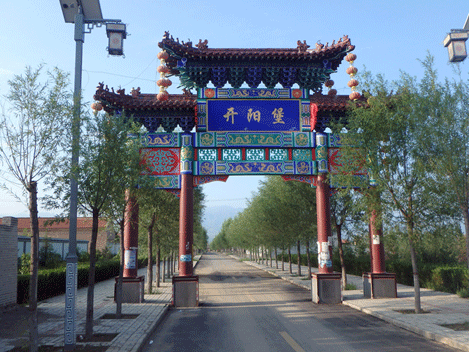
Kaiyang Village entrance
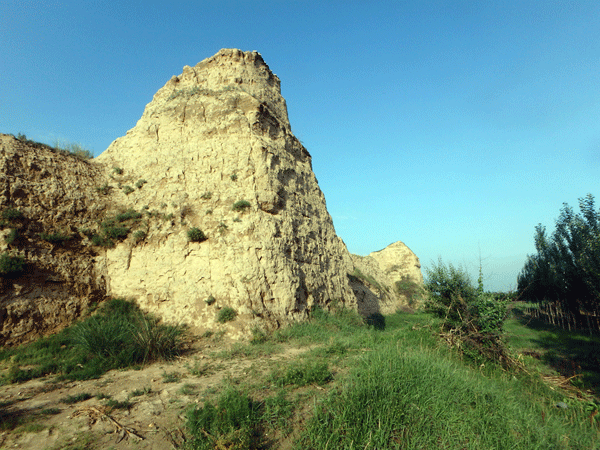
Massive old village surrounding walls
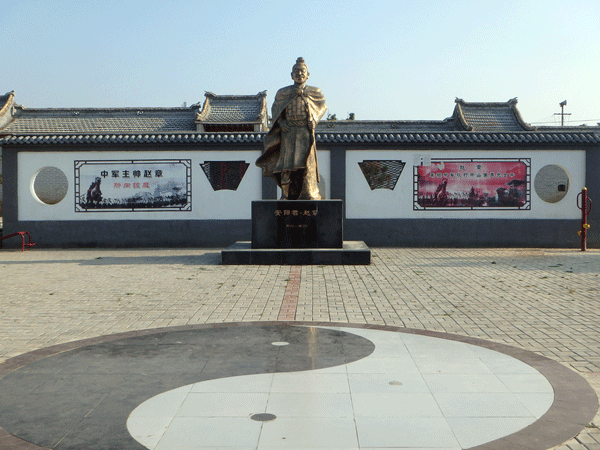
New village plaza
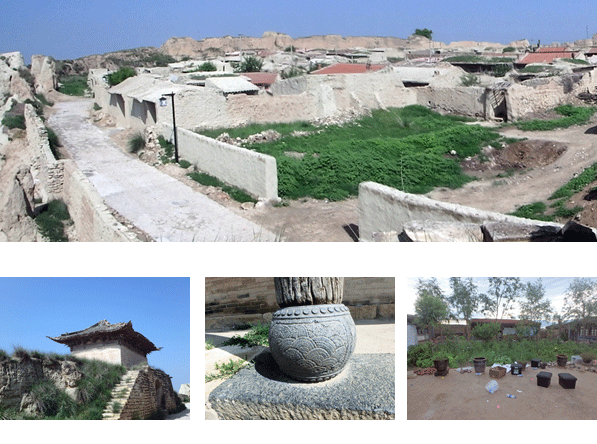
Old village views

The workshop venue was ideal. The village of Kiayang is about a 4 hour drive from Beijing in the Nihewan Valley, noted for its numerous paleontological and early archaeological sites. There is a modern village built outside the original fortified,walled village,which is mostly now abandoned. Our venue was in the middle of the old village in a 'compound' with a large central plaza, a kitchen garden and open areas. The plaza is enclosed on three sides by functioning buildings with three en suite rooms and several dormitory-style rooms, a kitchen, a sizable dining room, an office and several other rooms including storage areas and a small museum. Most workshop activities took place in the old village plaza, however we had heavy rain on a couple of days and we were allowed to move into the new village community hall.
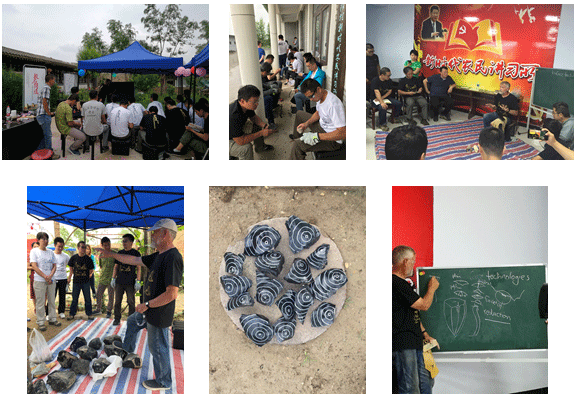
Left to right: top row- Historic 'relics'of signed flakes from workshop; me explaining something; teaching; old village plaza venue; knapping practice; village hall venue (overseen by an image of the Chinese President). Left center- Graduation ceremony presentation of certificate. Bottom row- participants with 'diplomas'; participants and observers; obsidian nodules; flake blanks; me explaining fracture mechanics.
Eighteen individuals actively participated in the practical activities while a larger group observed. The participants were all either University Lecturers or researchers from museums and other institutions from many regions of China. These included, from northeast to southwest, Liaoning University, the Institute of Vertebrate Paleontology and Paleoanthropology,Peking University, Renmin University, Hebei Normal University, Inner Mongolia Museum, Shanxi University, Heilongjiang Institute of Archaeology,Northwest University and the Guizhou Institute of Archaeology.
Observers included university students, archaeological colleagues, professors,local dignitaries and some local residents. Raw material was brought in from many of these locations but mostly we used a very high quality obsidian from the China-North Korea border. It was perfect for making large flake blanks for the participants to begin with. Sessions mostly started with me explaining and demonstrating an aspect of flaking, starting with fracture mechanics then moving on to different general technologies. These would be followed by knapping practice and my moving around giving individual instruction and encouragement.

Locations fromwhich the participants came.
All of the participants were excellent 'students' and made great progress. Some had already had some experience but most were beginners. The goal was not only for them to gain knowledge and some knapping ability but to learn my teaching method so they could take it back and apply to their teaching. We did two days then took one day to visit archaeological sites in the region. These are all very early sites, dating as far back as 1.66 million years. They are doing impressive work, both in the field and in analyses and publication.

General physiography and some site exposures

We visited Donggutuo (1.2 million years old), Shigou (1.4-1.6Ma years old, and the main culture layer is about 1.5Ma years old), Majuangou (1.66 million years old and several other localities. The sites are being exposed in deep erosional cuts with archaeological horizons as much as 36 meters below modern ground surface.
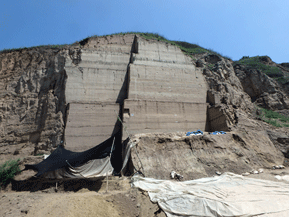
Yuzuigou with a 34 meter high profile!
Fossil large mammal bones with evidence of butchering
After the site visits we had two more days of intensive workshop activity topped off with a formal graduation ceremony in which each participant received a diploma signed by two attending Palaeolithic research professors, Gao Xing and Fei Xie, and me.
I was especially impressed by the food that was served during the workshop. It was prepared in the kitchen and plaza, including vegetables from the garden and served in the dining room at round tables with large central turn-tables on which the various dishes were placed. One simply had to rotate it to choose the next dish. I was also treated to a number of restaurant experiences, all of which were excellent.
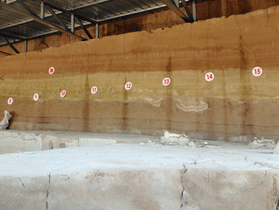
Spectacular 'layer-cake' stratigraphy
This included a stop for lunch on our site tour in the town of Huashaoying, which specializes in restaurants that serve donkey and dog meat. We went to a donkey restaurant- it was excellent.

Workshop meal
Normal restaurant meal
Traditional hot pot
Korean restaurant in Beijing
Typical eating method with chop sticks
I acquitted myself well by plucking a slippery meatball from the hot pot
After the workshop I was treated to some sight seeing including a visit to the
ancient Buddhist center of Yungang near the city of Datong (noted as being the most polluted city in China due to the coal electric generating plants). The historical site was not polluted and was very busy with tourists in spite of a steady rain. There are some huge and spectacular Buddha figures carved in the cliffs.

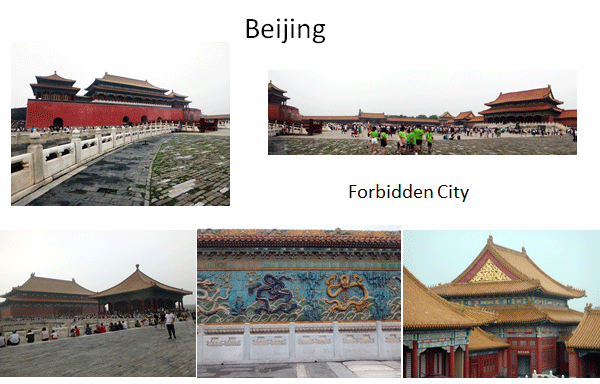
Hailong and I passed through the Great Wall twice, once on the way out of Beijing and again on the way back, but it was raining heavily and we were running late, so we didn't stop. Perhaps on the next visit. Hailong's wife Sun and daughter Joy joined us in Beijing for two days of sight seeing including museums, the Archaeology Department, Museum and campus at Peking University, a tour of the facilities and museum at the Institute of Vertebrate Paleontology and Paleoanthropology and a day exploring Beijing and the Forbidden City. Hailong managed to get us tickets to the Imperial Palace- they are limited to ONLY 100,000 visitors a day!
I had a fantastic visit, got to know great colleagues from many parts of China and hope to return for more workshops. i will be going back to another part of China for a workshop in 2019.
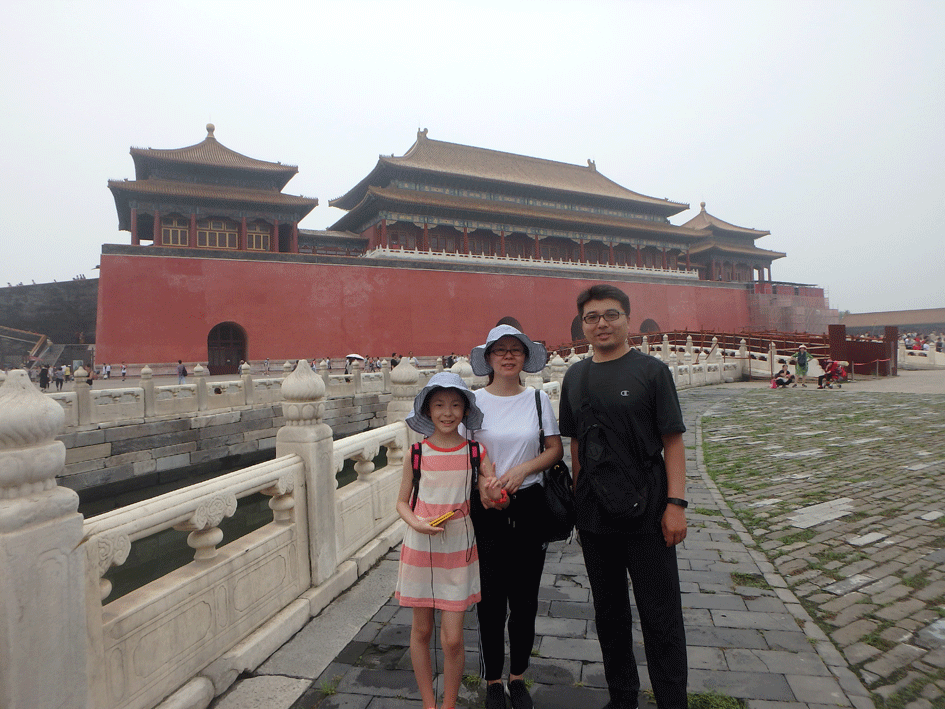
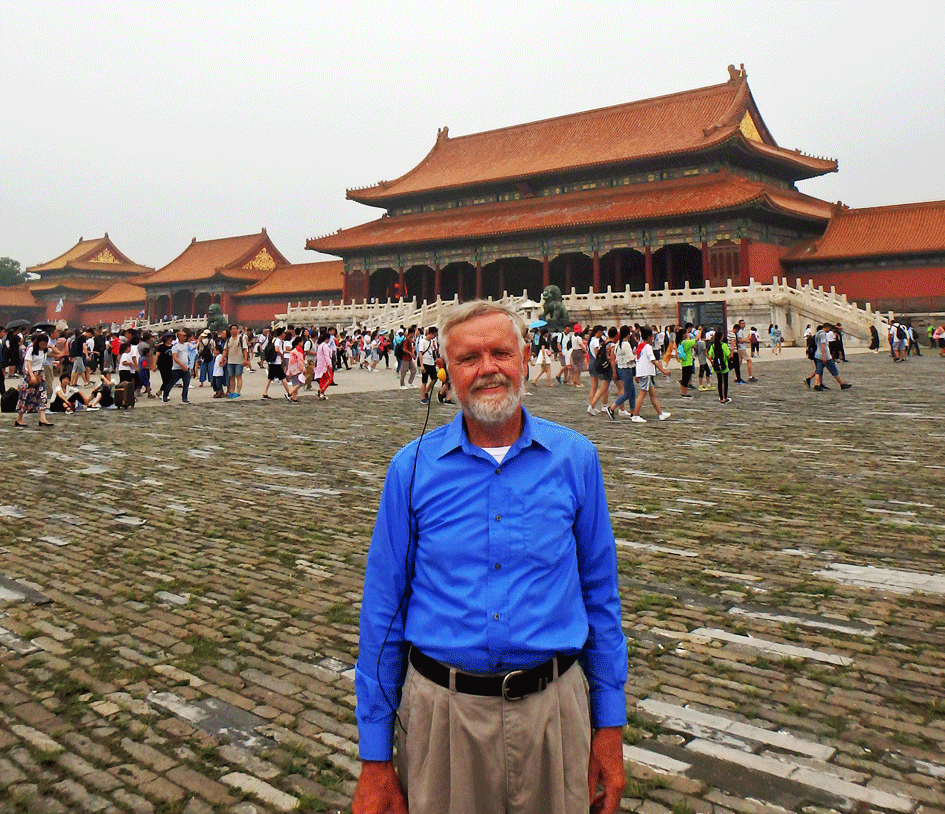
Joy, Sun, Hailong and me in the Forbidden City, Beijing.